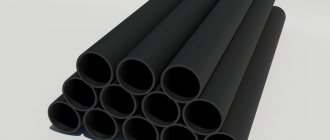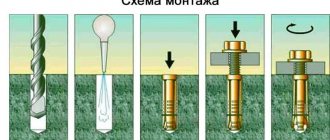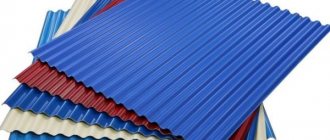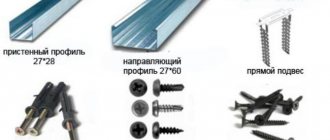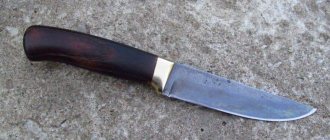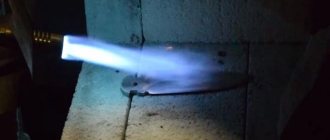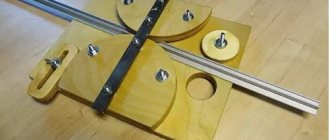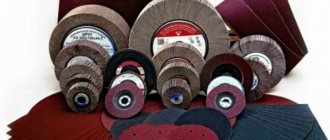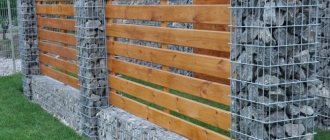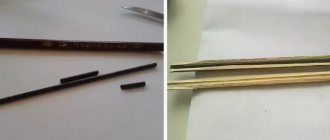Types of polycarbonate fastening
Fastening of the material can be point, profile or mixed.
For point fastening, thermal washers are used to secure the sheet to the frame, the manufacture of which takes into account wind and snow loads. The fastening elements should have a distance of 30-40 cm. The disadvantages of this type of fastening include the loss of attractiveness from the inside, due to the fact that the profiles used to connect do not always coincide with the frame. For profile fastening, connecting profiles made of aluminum or polycarbonate are used. They are fixed to the frame and then used to insert blanks. The disadvantage of such fastening is that if the calculated load is exceeded, the panel, which was fixed only along the perimeter, can fall out of the grooves.
When using a mixed type of fastening, the two above-mentioned types are combined to avoid disadvantages.
Rules for using the material
Let's take a closer look:
- Polycarbonate should be stored in a dry, ventilated area, away from heating devices. Do not use plastic film to cover it. The stack of sheets should not exceed 2.5 meters. The sheets are laid on a flat surface, with the UV protection facing up (you can see the markings on the protective film).
- The protective film should only be removed when the installation work is completely completed.
- Together with polycarbonate, you can use polyethylene, Teflon, polypropylene, silicone, polychloroplen and neoplene. They do not destroy polycarbonate.
- The use of acrylic sealants, polyvinyl chloride, polyurethane, as well as sealants based on benzathide and amines with polycarbonate is contraindicated. These materials are incompatible with the one in question.
- The material can be used at temperatures from 10 to 20 degrees Celsius.
Work process
Despite the high degree of strength and reliability of the material, making holes inside it is quite easy. To do this, you can use a simple stationery knife. It is enough to apply the markings with a pencil or marker. Subsequently, a blade is passed along it, lightly pressing on the instrument.
An ordinary electric drill, screwdriver, or metal drill is suitable for drilling holes. The main thing is not to press too hard on the polycarbonate. Excessive pressure may cause the material to burst.
What is used for fastening?
When fixing polycarbonate to metal, the following components can be used:
- Profiles. It is possible to use different types - end, corner, connecting, wall, ridge.
- Thermal washers and mini washers.
- Plugs.
- Adhesive tapes for gluing ends (solid and perforated).
- Profile seals.
The end profile allows you to protect the edges of the plate, while the short stick should be placed on the outside.
The connecting profile connects the edges of the sheets. It should be understood that only detachable profiles can be attached to the frame.
The corner profile is designed to connect corners.
Using a wall profile, the sheet is pressed tightly against the wall. It can also be used as an end profile.
Using a ridge profile, you can connect sheets at the roof ridge, but only if they are connected at an angle of more than 90 degrees.
Thermal washers are:
- individual (have a length equal to the thickness of the plate);
- universal (suitable for any thickness of material, they do not have a leg);
- Mini washers are designed for sheets with small thicknesses.
Caps are used to make the structure more attractive and protect the ends from moisture, insects and dust.
How to fasten polycarbonate or methods of fastening polycarbonate sheets
Just a few years ago, polymer plastic was considered almost a curiosity, but today this material is widely used in everyday life, advertising, various industrial sectors and construction. Polycarbonate is also indispensable in individual construction, and especially in civil and industrial construction. For the construction industry, polycarbonate is available in two types - cellular and cast. At the same time, the strength of the connection, and therefore the durability and reliability of the entire structure, depends on how correctly the polycarbonate was fastened using the correct technology.
About the connecting profile
This profile is used to attach polycarbonate sheets to each other, as well as to the frame. They are produced with a thickness equal to the thickness of the sheets.
When the profile is inserted into the gap, be sure to leave 3 mm between them. This gap resists deformation of the structure when the sheet expands in the sun.
There are detachable and one-piece profiles. The sheet is inserted into the groove and fixed. You can use profiles of different sections made of polycarbonate, aluminum or plastic.
Panel orientation
Polycarbonate has stiffening ribs that are located along the length of the panel. The structure will be very strong if the hollow channels are positioned correctly.
Let's look at the basic rules:
- If the panel is installed vertically, the channels must be vertical.
- When making an arc-shaped structure, the bending line should run parallel to the channels.
- For inclined structures, the channels should be located in the direction of the slope.
Polycarbonate is available with an ultraviolet protective film. It contains information regarding the recommended placement of this material. During installation, you do not need to remove the film, which will greatly simplify the work.
Installation of polycarbonate
The end of the 20th century for Russia was marked by the active penetration of advanced Western technologies into everyday life.
One of these technologies in construction was the introduction of polycarbonate, which is head and shoulders above all previously known transparent sheet materials. Having light transmittance and UV protection at the same level as glass, this material provides double the mechanical strength to constant loads and two hundred times the impact resistance. The lightness and high viscosity characteristic of organic polymers is combined with the resistance to extreme natural temperatures characteristic of inorganic materials with a crystalline lattice.
Polycarbonate, unlike acrylic plexiglass , is very difficult to burn, and it is completely impossible to make it burn on its own.
Cellular polycarbonate, which is a hollow panel made of several thin layers of polycarbonate (most often 2), located at some distance from each other, and stitched together with stiffening ribs, is particularly widely used
The presence of voids provides the material with impressive heat and sound insulation characteristics; the H-shaped internal structure greatly increases mechanical strength, just like in I-beams.
The universal characteristics, accompanied by the ease of shaping polycarbonate into the desired shape, allow it to be used not only as a replacement for glass, but also as a roofing, decorative material, or even for a fence.
Mastering the technique of installing polycarbonate panels is not particularly difficult; you just need to follow some important points.
How can you bend the arch?
The bending radius of the arch should not be higher than 20 mm of the material used.
Each type of material in question has its own characteristics on the protective film. These data should be used as a guide.
Let's consider the relationship between the minimum permissible radius and sheet thickness:
| Sheet thickness in millimeters | Radius in millimeters |
| 4 | 0,7 |
| 6 | 1,05 |
| 8 | 1,4 |
| 10 | 1,75 |
| 16 | 2,8 |
| 20 | 3,9 |
How can you cut polycarbonate?
There should be no vibration during cutting of the material in question, and chips must be removed after cutting.
For cutting you can use the following tools:
- with a construction knife, if the sheet thickness is no more than 10 millimeters and there is a small amount of work to be done;
- jigsaw (considered the most acceptable option);
- a high-speed saw with a stop (the teeth of this tool should be small, hard-coated and not spread in different directions);
- a band saw, the width of which does not exceed 20 mm, thickness - up to 1.5 mm, with teeth spaced in increments of no more than 3.5 mm, with a cutting speed of no more than 1000 m/minute.
How and with what to attach polycarbonate to metal and wood?
The most technologically advanced and durable fastening for polycarbonate is considered to be the use of galvanized self-tapping screws with a hexagonal head in combination with a thermal washer.
The type of screws is selected based on the base material: for wood - with a diameter of 4.8 mm, or for metal - with a diameter of 5.5 mm. For small-area structures, the use of roofing screws with a hexagonal head is allowed. It is better not to use self-tapping screws for fastening polycarbonate; accidentally removing the screwdriver/screwdriver from the slot can result in damage to the expensive panel.
For aesthetic reasons, the length of the self-tapping screw should not exceed the total thickness of the polycarbonate and volumetric sheathing, screwing approximately 3/4 of the depth into the wood and half the diameter into the frame pipe.
Fastening polycarbonate with thermal washers
Thermal washer is a means of hydro- and thermal insulation of a self-tapping screw designed specifically for fastening polycarbonate.
It consists of:
- durable plastic washer with a diameter of 33 mm , with a leg for penetration into polycarbonate; if there is no need for insulation, such a washer can be made of steel;
- sealing gasket under the washer;
- tight cap for the self-tapping screw.
Installation of the thermal washer is carried out in the following order:
- drilling a hole in the panel and the diameter of the drill is 1 - 4 mm larger than the diameter of the washer leg;
- if necessary (if the self-tapping screws are not able to easily screw into the frame on their own), drill the base with a thin drill along the intended hole in the polycarbonate. The diameter of the drill is taken 1 mm less than the diameter of the self-tapping screw;
- blowing dust and chips;
- installing the washer together with the gasket, the leg in the hole;
- screwing in the self-tapping screw until it stops , the washer should fit tightly to the material, completely covering the elastic gasket inside. When purchasing thermal washers, the main characteristic is the length of the leg, which should match the thickness of the polycarbonate. When resting against the sheathing, the leg will not allow you to overtighten the screw,
- closing the screw head with a tight cap . The caps are designed for great durability; installation will require significant physical effort.
Fastening polycarbonate using metal profiles
The panels are attached to each other using special profiles made of polycarbonate or aluminum. Aluminum profiles look beautiful, are equipped with special elastic gaskets and clamps for them, have a significant service life and are less susceptible to deformation.
Plastic profiles can be matched in color to match the panels and create a visual solidity of the structure.
Depending on the purpose, the following types of profiles are used:
- end - has a special design that allows condensate to drain from the honeycomb to the outside;
- one-piece connecting - the simplest, H-shaped, for reasons of ease of installation, used only for small structures;
- detachable connecting - a more complex and convenient design for longitudinal connection of panels;
- corner – for connecting the edges of the panels at an angle of 90 degrees;
- wall-mounted – single-slot, F-shaped design, for the same application;
- ridge - wide, with grooves at an obtuse angle, serves as a ridge part.
Point fastening of panels
At the intersection of polycarbonate panels with transverse sheathing, point fastening of the material is used using a thermal washer with a self-tapping screw. The pitch of the lathing depends on the thickness of the panel and the required strength characteristics and is 0.6 - 1.2 m.
The step between fastenings is 30 – 70 cm. It is unacceptable to leave the distance from the fastening to the edge of the sheet more than 10 and less than 4 cm.
One-piece profiles
If it is necessary to reduce the cost of construction as much as possible, one-piece H-shaped polycarbonate profiles are used to connect polycarbonate panels to each other. Working with such a profile is quite simple - panels with a gap of 3 - 5 mm are inserted into its grooves on both sides, the profile itself must be attached to the longitudinal lathing placed under it using self-tapping screws with thermal washers with a pitch of 40 cm.
However, poor insulation characteristics and inconvenience when inserting long panels into narrow grooves limit the use of this type of profile to small external structures.
Split profiles
Split profiles provide installers with the ability to work with long honeycomb panels. The presence of elastic gaskets in aluminum versions ensures a high degree of waterproofing of the connection. The profile itself consists of two parts - the base, the “base”, and the cover.
Installation is carried out in the following order
- the base is attached to the longitudinal frame with self-tapping screws in the center in increments of 30 cm . You can take regular galvanized screws or with a press washer for a polycarbonate profile. It is advisable to drill holes for them in advance, with a drill 1 - 2 mm larger in diameter for the base, and 1 mm smaller in diameter for the frame;
- panels are laid on the base on both sides , a gap of about 5 mm is left from the panel to the stop to compensate for thermal expansion;
- The legs of the lid are forcefully inserted into the corrugated U-shaped center of the base When using a polycarbonate profile, you should avoid impact impacts; you just need to snap the lid.
Corner connection of panels
To fasten the corners of polycarbonate panels, special corner profiles with grooves at an angle of 90 degrees to each other are used. As with other connections, when inserting material into the grooves, it is necessary to leave a small gap.
Different models can support the installation of panels of different thicknesses, double-sided types combine the functions of corner and connecting profiles.
Connecting to a wall
The end-to-end connection to the wall, along with the free ends, requires careful protection from dust and water. Therefore, special F-shaped wall profiles are used for it.
The procedure for installing polycarbonate in such a profile is as follows:
- the end of the honeycomb panel is glued with sealed aluminum tape;
- the sheet is installed in the profile groove;
- the profile is attached to the wall using fasteners suitable for the wall material;
- The cracks on top are sealed with sealant, and decorative painting is done.
Interfacing panels in the ridge
The connection of the panels in the ridge is carried out using a special ridge profile, which is similar in design to a connecting profile, but has especially deep grooves located at an angle of 90 - 150 degrees.
As in the case of connecting x, ridge profiles have detachable and one-piece options. The fastening technique is similar to similar types of connecting profiles.
How to drill holes?
It is recommended to drill holes in the material in question between the stiffeners. You need to retreat from the edge at a distance of at least two drill diameters.
Basic drilling rules:
- The drill should be sharpened at an angle of 30 degrees.
- Drilling is carried out at right angles, the speed should not exceed 40 m/min.
- The hole size must exceed the diameter of the fastener by 3 millimeters.
- It is necessary to take breaks while working with the drill to prevent it from overheating and to remove chips from drilling.
How is cellular polycarbonate attached to the greenhouse?
Reasonable price and easy installation make the presented material the most popular for arranging greenhouses and greenhouses. This choice is very justified by one of the reasons - durability. However, in order for the greenhouse to last for years, it is necessary not only to choose a strong ceiling and reliable fastening, but also to build a stable frame.
Fastening material
Fastening of polycarbonate sheets is carried out with thermal washers and self-tapping screws. And to create strength, various profiles are used. But in order to make the work easier, it is necessary to take into account the properties of the plastic.
Features of polymer plastic
As you know, this material expands at high temperatures and contracts at low temperatures. That is why the holes created for fastenings should be several centimeters larger than its diameter. Screwing the screws must be done slowly and carefully so as not to damage the sheet.
Keeping distance
The holes should be prepared in advance for ease of work. The distance between the screws must be controlled according to the following recommendations
- the deviation from the edge when using a self-tapping screw should be 4 cm.
- in the case of using a 10 mm sheet, the gap from hole to hole should be 30-50 cm. But in the case of using 16 mm, the distance will be 50-80 cm.
- a distance of 50 cm must be maintained when installing a 4 mm sheet.
Sealing the edges of the plate
The ends of the polycarbonate panels are covered with temporary tape, which must be removed before sealing begins.
The top edge is sealed with continuous adhesive aluminum tape. And to seal the bottom edge, use perforated tape.
If the end does not fit into a groove or other profile, a trim profile is attached directly to the tape.
For the lower profile, the holes should be at a distance of 300 millimeters to allow condensation to drain.
All edges of arched structures are sealed in the same way as the lower ones.
How to attach honeycomb polymer to metal?
Transportation of cellular polycarbonate slabs, that is, those with numerous grooves, must be very careful.
Such material should not be placed in a room with high humidity. Before using this material, you need to carefully check whether there is moisture in the honeycombs. Even if there is a small amount of condensate, it must be removed by blowing with compressed air. For this purpose, you can use turbo-gas blowers or fans with cold air flows.
Important to know: To attach honeycomb carbonate to a metal frame, you need to use elements with a galvanized tip or a stainless steel drill. It is very important to use sealing rubber washers or thermal washers.
Fasteners should be located at a distance of 40 to 60 centimeters. The self-tapping screw is screwed in at a right angle, without applying strong pressure at the final stage of screwing, so as not to deform the surface.
Mounting features (installation standards) ↑
High strength properties of structures made from this material are achieved with appropriate orientation of the hollow channels included in its structure. Thus, when installing polycarbonate panels vertically, the greatest strength is ensured by their orientation from top to bottom, and for curved structures - parallel to the bend contour. For inclined elements, maximum rigidity can be obtained by placing sheets in the direction of the slope.
When installing such products externally, polycarbonate with a protective coating that protects against UV radiation is usually used. All information on the type of protection and method of laying the panels is usually provided on the protective film, so it is not recommended to remove it until the installation of the products is completed.
Before attaching polycarbonate to metal, you need to familiarize yourself with the restrictions on the permissible parameters of its installation, such as, for example:
- the angle of inclination for a standard sheet length should not exceed 5 degrees, and for workpieces longer than 6 meters this figure can be increased;
- the bending radius when forming arched structures according to the specifications cannot be more than 150 nominal thickness of the panel itself;
- The diameter of the holes prepared for fastening is generally selected 3 mm larger than the same size for the fastening element.
In addition, the list of restrictions stipulates the type of hardware (fastening elements) or polymer materials used to fix the workpieces, the procedure for installing sealing gaskets, and much more.
↑Preparatory activities
Before attaching polycarbonate to a metal frame, we advise you to pay attention to the fact that to install the sheets you will need the following set of tools:
- hacksaw for metal;
- electric drill with a set of drills and a screwdriver;
- sharpened mounting knife;
- measuring and marking tools (ruler and pencil).
In addition, before starting work, you should prepare self-tapping screws with a galvanized tip (or stainless steel) and a set of thermal washers that ensure reliable sealing of the joints.
Even before they are carried out, you also need to pay attention to the following points:
1There are two types of polycarbonate fastening: frame and profile. In the first case, a frame with grooves up to 25 mm deep, made of wood, metal or plastic, is used. The internal dimensions of this design are selected in accordance with the dimensions of the workpiece used (taking into account the required clearances). When choosing the second option, special guide profiles are used for fastening.
2Fixation on the profile frame can be done in two ways. This is the so-called “wet” method, which involves the use of special putty and sealants, and the “dry” method (using self-tapping screws, screws and bolted connections). 3The self-tapping screws are screwed in perpendicular to the laying plane in such a way as not to deform the material by excessive pressure. 4 During installation, it is mandatory to use sealing elements made in the form of rubber gaskets without plasticizers or a plastic profile.
Important
Gluing sealing gaskets to polycarbonate, as well as attaching it directly to metal, is not allowed.
5The spacer fixation step is 50 cm (taking into account a two-centimeter space from the edge of the frame). 6When working with the “wet” method, you can use polyamide glue or double-sided adhesive tape (for lightweight structures). For external installation, weather-resistant silicone compounds are used. 7Before gluing prefabricated elements, their surfaces are degreased using a solvent, which is usually used as isopropyl alcohol.
When describing the upcoming work, we will consider the option of profile fixation of workpieces on a metal frame using the “dry” fastening method.
Attaching a monolithic polymer to metal
The use of monolithic plastic is most suitable for obtaining durable transparent partitions, ceilings, windows and other elements.
Attaching cast polycarbonate to a metal frame occurs by inserting it into special frames, followed by their fastening.
Large canvases can be placed on a frame and then connected to each other with profiles and adhesive. You can also attach them to the frame using self-tapping bolts and other elements.
Fixation can be wet or dry. The first method includes a polymer lubricant, which is laid along the edge of the material. After this, the slab is fixed in the frame and the resulting seams are treated with silicone-based sealant. Sometimes rubber or silicone gaskets may also be required.
With the dry method, fastening occurs in almost the same way as in the case of honeycomb sheets. Self-tapping screws with gaskets, profiles and overlays are used.
What is a thermal washer
A product that is a set of various parts with which polycarbonate sheets are point-fastened is called a thermal washer.
Thermal washers are used for point fastening of polycarbonate sheets
It is quite complex in its design and consists of:
- legs up to 16 mm long;
- a sealant that acts as a sealant;
- top plug or “cap” that prevents the penetration of moisture and dust.
The product is a compensator for the thermal expansion of the fastened material, performs insulating functions, bridging existing gaps, protects the self-tapping screw, bolt, screw from corrosion, creates a reliable, strong fastening of the canvas to the structure, and looks beautiful in the ensemble of elements of the entire structure.
How to handle polycarbonate?
It is important to understand that contact of polycarbonate with bare metal has an adverse effect on the material. For this reason, you need to prepare a large number of silicone and rubber gaskets.
The material plates should be handled with care, without removing the protective film. The working surface must be clean and of the required size so that the edges of the sheets do not hang from it, and dust and moisture do not get into the ends of the plates.
You should start cutting and drilling only after the fastening locations have been calculated and markings have been made.
It is not recommended to walk on a sheet of material, as this can lead to damage and cracks. They will not be replaced immediately, but sooner or later they will manifest themselves.
Attaching polycarbonate to wood
For comparison, consider the scheme for attaching the material in question to wood:
- The sheet is placed on the frame, and holes for fasteners and screws are made with an electric drill. When drilling, hold the drill perpendicular to the surface. It is better if the holes are oval, elongated along the length of the plate. It is important that the washer completely covers the hole.
- Next, other panels are laid and secured. The panels on the doors and ends are attached last.
- The edges of the sheets are sealed with thermal tape or profile. If necessary, you can use sealant to further process the joints.
Typically, honeycomb polycarbonate plates are used for fastening to wood. Before this, the tree must be treated with a special agent against rotting and bugs.

